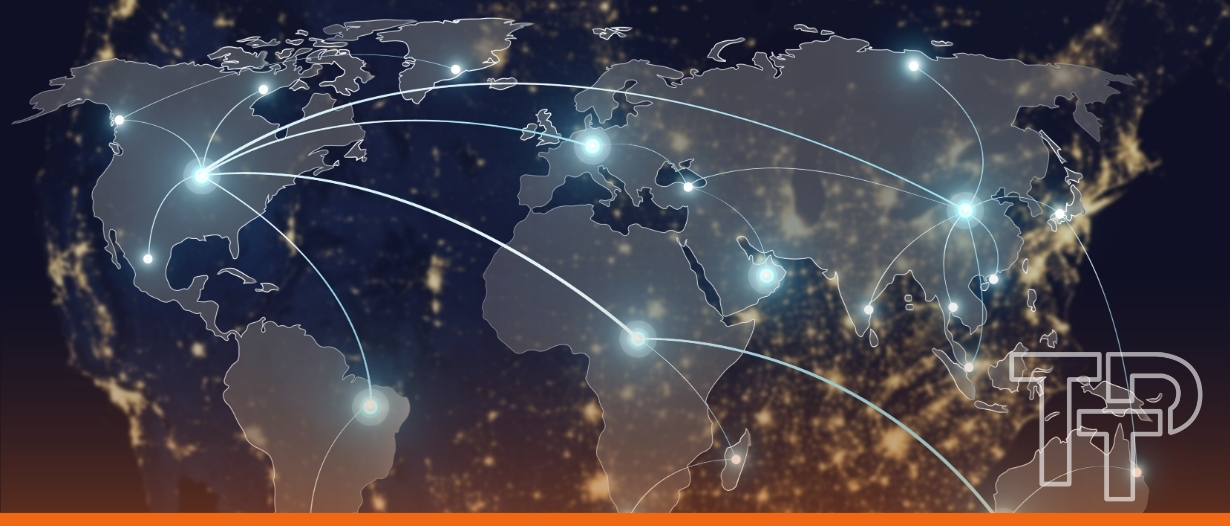GLEIF and Finternet Lab sign MoU to advance digital identity standards
Carter Hoffman
May 23, 2025
 Carter Hoffman
May 22, 2025
Carter Hoffman
May 22, 2025

When cross-border payment systems work well, an exporter in Toronto can be paid by a buyer in Tokyo as easily as if the two were in the same city. That is one of the many reasons why these systems are often described as the lifeblood of global commerce.
For treasury and payments professionals, achieving this goal of making international payments feel as easy and reliable as domestic is motivating banks, fintechs, and regulators alike to improve the cross-border experience for their clients.
Yet industry veterans know we are not there yet. Cross-border transactions can still be painfully slow or unpredictable compared to local payments, and there is intense pressure in the industry to modernise and remove pain points.
During the Cross Border Payments Deep Dive at the Payments Summit in Toronto, Inderpreet Batra, Managing Director & Senior Partner at the Boston Consulting Group spoke with Matthew Parker-Jones, SVP, Global Head of Product Management – Global Transaction Banking at Scotiabank; Abhinav Natarajan, Executive Director, Global Product Lead; Kinexys Digital Payments at JP Morgan; and Elena Casal, Chief Client Officer at The Clearing House in a panel discussion titled, Cross-border infrastructure trends & how infrastructures & FIs are innovating in cross-border flows.
Despite their importance, today’s cross-border payment rails can be rather fragmented and opaque. A myriad of intermediaries, like correspondent banks, clearing systems, or FX converters, are often involved in a single transaction, raising fees and hampering visibility for both the sender and receiver. For nearly a quarter of global payment corridors, fees still exceed 3%, and one-third of retail cross-border payments took more than one business day to settle in 2024.
Adding to this, businesses often don’t know upfront what a cross-border payment will cost or when exactly it will arrive. Charges can be added by intermediary banks without warning, and payment tracking is limited. An infuriating lack of clarity.
Indeed, new services like SWIFT gpi have introduced end-to-end tracking and confirmed delivery for international payments, but these are not yet universal. Many legacy corridors still operate on a “pay and pray” model where senders hope the payment reaches the beneficiary intact. In fact, the most reliable method of sending a large payment across any border in 2025 feels like something out of an old-school James Bond Movie.
One member of the panel said, “Does anybody know what the most reliable and guaranteed way to send $5000 around the world is? Not Swift, because Russia is not on Swift anymore. The most reliable way to send $5000 around the world in 24 hours is to get cash, put it in a briefcase, put an AirTag in that briefcase, buy a plane ticket, and fly it there… That’s the state of cross-border payments today.”
Modernising this is an urgent priority. Every extra hop or data handoff in a payment’s journey is a potential point of failure or added cost, and the reality is that clients don’t care how the money moves, just that it gets there fast and with no surprises.
There are several ideas for how to make this possible. One of which, building on new technological innovations, is the use of tokenisation and digital assets.
Tokenisation, which refers to representing money or assets as tokens on shared ledgers, is gaining prominence as a way to change payments and help in other aspects of the international economy, such as correspondent banking.
Blockchain and distributed ledger technology (DLT), the technologies often (though narrowly) associated with cryptocurrencies, underlie many such tokenisation initiatives. A wave of experimentation is underway, from banks issuing tokenised deposits to central banks exploring wholesale CBDCs (central bank digital currencies) for interbank settlement.
The BIS, for example, recently launched Project Nexus to link domestic instant payment systems across borders, aiming for payments in 60 seconds or less. Another BIS project, Project mBridge, is testing cross-border CBDC payments in Asia, and Project Agorá is examining how tokenised deposits and central bank money could work together on new ledgers.
Private sector players are also innovating. JP Morgan’s JPM Coin platform is designed to enable 24/7 intrabank cross-border transfers, and stablecoin issuers are partnering with fintech firms on cross-border remittances using digital dollars.
Stablecoins (privately issued digital currencies typically pegged to fiat) have attracted both interest and caution from the industry. On one hand, regulated stablecoins (like those meeting new EU MiCA rules) could provide faster settlement and 24/7 availability, plugging gaps when banks are closed. On the other hand, if stablecoins grow without proper oversight, they could introduce new risks.
An unchecked proliferation, especially since 99% of stablecoin value is USD-denominated, could even lead to “digital dollarisation” in some countries, where local economies start relying on USD stablecoins instead of the national currency. That would undermine local monetary policy and stability.
While technology is accelerating, governance and policy frameworks are struggling to keep up. Cross-border payments, by their nature, must adhere to laws and regulations in multiple jurisdictions. Each jurisdiction may have its own KYC (know-your-customer) rules, anti-money laundering requirements, foreign exchange controls, and data privacy laws. Providers either need to implement different processes for different corridors or comply with the strictest of all the regulations. Neither option is particularly efficient.
The G20’s roadmap specifically highlights addressing legal and regulatory frictions as a key goal. In late 2024, the Financial Stability Board (FSB) issued final recommendations to promote greater alignment in data frameworks and more consistency in the regulation and supervision of cross-border payment providers. Closely related to this is the issue of standardisation. Today, a lack of common data standards means payment messages sometimes don’t carry all the information needed by the next party in the chain or are in different formats that require manual intervention.
The industry’s migration to the ISO 20022 messaging standard is a big opportunity to fix this, but only if everyone implements it in a harmonised way. That’s why a joint task force of the BIS and payments industry groups recently agreed on a set of harmonised ISO 20022 data requirements for cross-border payments, defining a minimum set of information that should accompany any international payment end-to-end.
Ensuring rich, consistent data (such as purpose of payment, originator and beneficiary details, and reference information) can enable straight-through processing and better compliance checks across borders. Data is the lifeblood of compliance and harmonising data standards will make AML checks more effective, reduce false alarms, and facilitate emerging needs, like travel rule compliance for crypto transactions.
Another governance challenge is simply coordinating across so many stakeholders. Cross-border payments involve central banks, commercial banks, fintechs, card networks, regulators, and international bodies. Governance, therefore, has to happen through cooperation and sometimes painstaking multilateral efforts.
Unfortunately, policy change is often slower than tech innovation, but regulators are beginning to engage more with the fintech community, and cross-border sandbox initiatives are trialling new ways to collaborate. This is particularly promising given the need to collaborate on areas like fraud prevention.
Technology, regulation, and industry practice all have to evolve in lockstep to transform cross-border payments. Thankfully, momentum is building. Innovations in infrastructure are beginning to cut through the old inefficiencies, and policymakers are growing aware of the need to remove barriers. Clients are demanding better, and competitive forces are pushing providers to improve.
The ultimate vision is one where sending money internationally becomes as routine as sending an email. To get there, incumbents and new players need to cooperate on standards and interoperability, even as they compete on services.
For trade, treasury, and payments professionals, the changes on the horizon promise to make jobs easier by eliminating issues and freeing up more time to add value for clients.
Cross-border payments are indeed the lifeblood of global commerce, and by working together to modernise and strengthen that system, we can ensure the global economy continues to thrive.

Devanshee Dave
May 23, 2025
Trade Treasury Payments is the trading name of Trade & Transaction Finance Media Services Ltd (company number: 16228111), incorporated in England and Wales, at 34-35 Clarges St, London W1J 7EJ. TTP is registered as a Data Controller under the ICO: ZB882947. VAT Number: 485 4500 78.
© 2025 Trade Treasury Payments. All Rights Reserved.